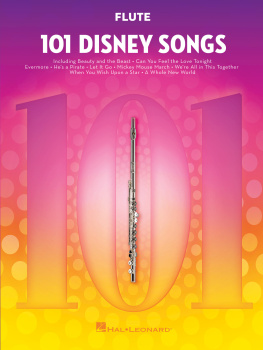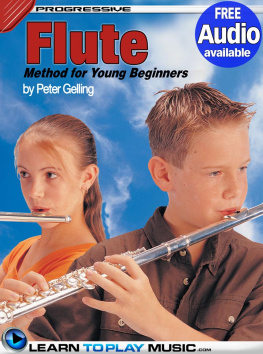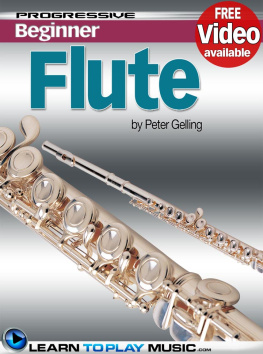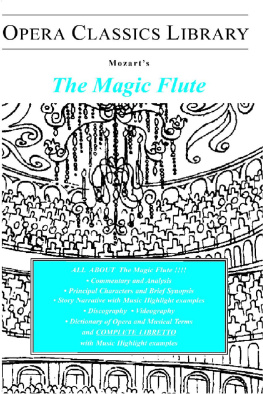Louis Harris Carla Tyler
HOW TO PLAY
FLUTE
IN EASY WAY
A Complete beginners Guide illustrated Step by Step.
Features, Easy Instructions, Practice Exercises
to Learn How to Play the Flute
Copyright 2020 publishing.
All rights reserved.
Author: Louis Harris
No part of this publication may be reproduced, distributed or transmitted in any form or by any means, including photocopying recording or other electronic or mechanical methods or by any information storage and retrieval system without the prior written permission of the publisher, except in the case of brief quotation embodies in critical reviews and certain other non-commercial uses permitted by copyright law.

Table of Contents
About The Flute
The flute is a wind instrument that is still very popular, although it has existed for hundreds of years. The flute is the sharpest instrument in most bands (especially beginner, because small is not always used) and is made of metal. Unlike other members of the wind family (clarinet, saxophone, etc.), the flute does not use pipes. On the contrary, the sound is formed by pushing the air with a cylindrical instrument.
Therefore-flute has been around for thousands of years-archaeologists discover bones with holes in them can be played just like a flute all the time. In writing, this article has every past civilization and presents an instrument, which resembles a flute, but the flute, as we know, is a fairly modern invention. The final product, the flute still used today in bands for beginners to professional orchestras, was created only a few hundred years ago.
Flutes are deceptive in their appearance, even if the flute can be very easy to play once you get the hang of it, it can be very difficult in the early stages of learning. The sound is created by people, chasing the lips, blowing into the hole, and a new stream of wind (imagined Breath) jumps and interacts with the air already at war. The special notes then correspond to the open or closed holes, which eventually lengthen or shorten the cylinder (or resonator, to be more precise). A good and strong tone is obtained only if the airflow is constant. It may seem easier than it really is, but practice will strengthen the diaphragm and lead to strong and bright tones.
Most flutes that people encounter are transverse flutes-these are flutes that are blown to the side. The transverse flute can be suitable for the length of each individual arm, which is important to ensure that it is possible to reach all the right fingers. Other flutes include the Pan flute (as shown in Greek mythology, the most famous), Ocarina, Xiao, Indian bamboo flutes, bass flutes, and the list goes on. At the professional level, virtually all flutes play" open hole " flutes, which are in appearance like the default transverse flute but are much more difficult to play.
Flutes are common in beginner bands, high school bands, and university bands. The flute is, however, still used in military, orchestras, symphonies, jazz ensembles, rock bands, ensembles fiato...la the list is endless. It is noteworthy that the flute enjoys a revival in popular music because its tones can add the right amount of pizzazz to any music.
If you are going to play the flute, there are countless flute instructors all over the country. Once you learn the basic fingering and how to play music, there is an extensive score that covers all genres of music, designed specifically for flute. With practice and decent distribution, you can play this beautiful tool in no time.

Learn to Play The Flute
The flute is undoubtedly the most popular wooden tool of Western culture. At the beginning of each school year, thousands of children begin musical adventures by learning to play the flute.
Here is a small story about the flute, which will give you an idea of this ancient instrument.
The flute is the most basic tool in the family of wooden tools. In fact, this is an ancient tool that dates back several thousand years in its most primitive form.
The flute does not have a reed that creates a sound like a clarinet, an oboe, a bassoon, or a saxophone. This is an aerophone, which means that you make a sound by blowing air into the hole in the device (hole).
Flutes are made of wood or various kinds and combinations of metals. Silver is the most common building material used for the production of modern flutes.
Theobald Boehm is honored for the invention of the modern 19 flute system. Century. The Boehm fingering system is the default for modern flutes.
Modern flutes are about 25 cm long, with a hole about 0.75 inches wide. We call it a concert instrument.
I'm not going to talk about it in detail, but it basically means that when you play the C flute, it's the same step C when you play the piano. Not for other wind instruments.
Types of flutes
The most popular flutes are called transverse flutes. Il, the second type of flute, is called a vertical flute. It is played with the end of the pipe to the floor. This is how you play with voicemail and many Indian flutes.
Flute with a closed hole
This refers to the type of keys that are on the tool. All keys are covering the tone holes (holes) he and closed flute hole is a solid piece-hence the name closed flute sticks.
Saxophone keys are another example of a closed Opening System.
Open The Flute.
On the flute to the hole, the keys covering the holes look like a donut. They have a hole in the middle of the key. However, all the keys on the flutes open hole are open. On the flute with an open hole, the keys are 7-9.
Now it can be confused-closed holes on the flute open holes? Only the second and third fingers of the left hand and four fingers of the right hand have a hole in the middle of the key on the open flute. The rest is closed.
Most professionals play the flute open because they have the ability to produce a larger, more resonant sound than a closed flute hole.
Western Culture
In western culture, there is a closed-hole and a transverse flute open by the King. In the programs of American public schools, they are usually the only option to play the flute in the school group.
Things you need to know if you are learning to play the flute:
Good
For the most part, very little maintenance is needed to keep the flute in great condition. It is suggested to keep the flute clean the keys and rods clean and removed once a year, in order to prevent corrosion on the rods.
There are no tubes on the flute, which are necessary for all other wooden breaths. Only this can save you a few hundred dollars a year on your account.
Bad
The flutes are very fragile. If they are not treated carefully, they can easily adapt. It can be very expensive.
Note
Raise your fingers from the holes again. Blow the flute, covering the first hole of the finger (the one closest to the oral hole). Cover with finger face shield. You shouldn't push it.
If the message sounds good, cover the hole while covering the next one. Cover the other holes if it looks good. Be sure to include all the holes. Each note should be less.
When playing the lowest tones, the upper lip should move slightly forward and down. The hole on the lips should swell and loosen.
If you lose the sound, or if you go to a higher note, start over. Practice until you can play the lowest note, with all the holes on your fingers.
Next page











